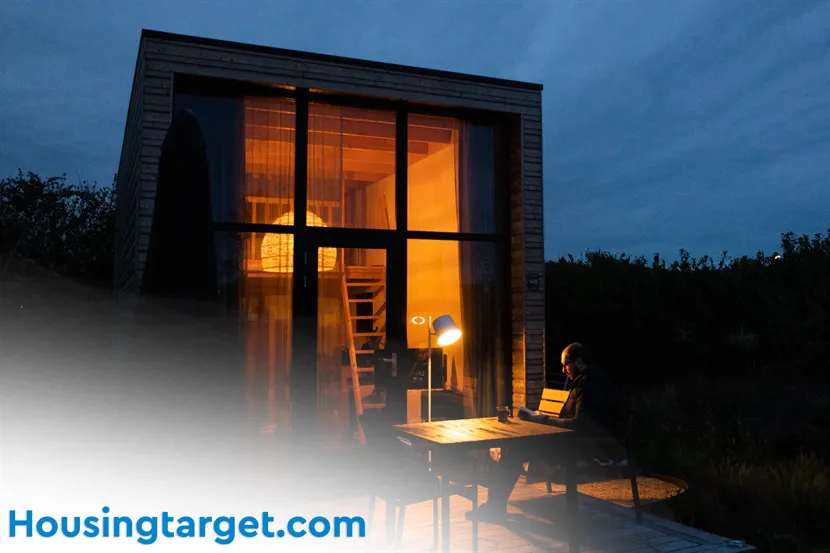The rise of inventive interior design in small spaces

As the real estate market continues to surge, leading to higher house prices, a significant trend has emerged: the inclination towards smaller living spaces. This shift has catalyzed a creative wave in interior design, focusing on making the most of compact areas. This article delves into the current trends that are redefining small space living, turning constraints into stylish and functional opportunities.
Brightening limited spaces up
In the world of small interiors, colors play a pivotal role. The trend leans towards playful hues that inject vibrancy and life into limited spaces. These colors not only elevate the aesthetic appeal but also create an illusion of a larger area. Designers are increasingly experimenting with bold and bright palettes, which add depth and character to small rooms.
Creating coziness
Alongside playful colors, there's a growing preference for warmer tones. These palettes offer a sense of comfort and coziness, essential in smaller living environments. Earthy tones, soft beiges, and muted greens are being used to craft inviting and snug spaces. This trend underscores the importance of creating a welcoming atmosphere, especially in confined areas.
Elevating small spaces
The concept of "Micro Luxury" is gaining traction, emphasizing luxury in small-scale interior design. This approach focuses on quality over quantity, where high-end materials and finishes are used to enrich the living experience. Compact spaces are being equipped with luxurious amenities, from bespoke furniture to state-of-the-art appliances, ensuring that size does not compromise style and comfort.
Designing for health
Wellness has become a central theme in interior design, especially in small spaces. This trend highlights the need for creating environments that support mental and physical well-being. It includes the integration of natural elements, like plants and natural light, and the use of materials that improve air quality. Designers are crafting spaces that are not only aesthetically pleasing but also health-promoting.
Sustainable design
Sustainability is no longer an option but a necessity in interior design. In small spaces, this translates to the use of eco-friendly materials, energy-efficient appliances, and designs that reduce environmental impact. The trend encourages recycling, upcycling, and the use of renewable resources, aligning living spaces with the growing consciousness towards environmental preservation.
A touch of elegance
Small spaces are witnessing a resurgence of Art Deco influences. This style, known for its geometric patterns, bold colors, and luxurious details, adds a touch of elegance to compact areas. The incorporation of Art Deco elements, be it in wallpaper designs, lighting fixtures, or furniture, brings in a unique blend of modernity and vintage charm.
Maximizing space
The open concept layout is a key trend in the design of small spaces. By eliminating unnecessary walls, these layouts create a sense of spaciousness and fluidity. This approach not only maximizes the available space but also enhances social interaction and flexibility in usage. Open layouts are particularly effective in studio apartments and small homes, where every square inch counts.
If you are also looking for a house for rent in Berlin or a house for rent in Amsterdam, you can find them on Housingtarget.com. If you prefer something smaller, you can also search for an apartment for rent in Rome or an apartment for rent in Paris.
In conclusion, the rising trend of living in smaller spaces has sparked a revolution in interior design. It challenges designers to think creatively, making the most of limited areas. The focus on playful and warm colors, micro luxury, wellness, sustainability, Art Deco influences, and open concept layouts exemplifies how constraints can lead to innovative and enriching design solutions. As we adapt to more compact living environments, these trends offer a roadmap for creating spaces that are both functional and stylish, proving that good things indeed come in small packages.
- April 2024 (1)
- March 2024 (3)
- February 2024 (5)
- January 2024 (4)
- December 2023 (3)
- July 2023 (1)
- June 2023 (5)
- May 2023 (1)
- Navigating the seasonal shifts in the residential real estate market 4. April 2024
- The rise of co-living: redefining room rentals for the modern era 21. March 2024
- The digital house hunt: How tech is transforming the search for real estate 14. March 2024
- Enhancing rental appeal through outdoor space redesign 7. March 2024
- Spring Cleaning Tips for Home Sellers and Renters 29. February 2024
- Nordic charm: The enduring appeal of scandinavian design in today's real estate market 23. February 2024
- Preparing Your Home for the Market: A Comprehensive Guide 15. February 2024
- Embracing the compact living revolution 9. February 2024
